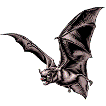Museum, University of Nebraska State

University of Nebraska State Museum: Mammalogy Papers
Document Type
Article
Date of this Version
4-26-1974
Citation
Occasional Papers / Museum of Texas Tech University (April 26, 1974), number 22, 23 pages.
Abstract
The Yucatán Peninsula, as encompassed in this series of papers, includes the Mexican states of Campeche and Yucatán, and the Federal Territory of Quintana Roo. This region is a low-lying plain that rises gently in elevation from north to south. It is surrounded on three sides by water and bounded on the south by British Honduras (i.e. Belize), Guatemala, and the Mexican state of Tabasco. The vegetation of the peninsula increases in height from north to south and from the coast inland. Generally, forest to the north is xerophilic, but that of the southern part of the peninsula is tall, quasi rainforest.
Although the mammalian fauna of the Yucatán Peninsula is unique in many ways, there has been no comprehensive account of mammals of the region since Gaumer's (1917) "Monografía de los mamíferos de Yucatán." In an earlier paper of this series (Jones, et al., 1973), the chiropteran fauna of the peninsular region was treated. The present report deals exclusively with rodents, 20 native species of which (and two that have been introduced) presently are known from the Yucatán Peninsula. These 22 species represent 16 genera of seven families as follows: Sciuridae, two; Geomyidae, one; Heteromyidae, two; Cricetidae, 12; Muridae, two (introduced); Dasyproctidae, two; and Erethizontidae, one. One genus (Otonyctomys) is endemic to the peninsula, as are four species (Sciurus yucatanicus, Heteromys gaumeri, Peromyscus yucatanicus, and Reithrodontomys spectabilisi and a number of subspecies.
This report is based principally upon material housed in the Museum of Natural History at the University of Kansas. In the summer of 1962, two field parties from Kansas visited the region, one consisting of W.E. Duellman and six students enrolled in a field course in vertebrate zoology, and the other including the senior author and four students working on a survey of terrestrial vertebrates and their ectoparasites under the aegis of a contract (DA-49-193MD- 2215) from the U.S. Army Research and Development Command. Also, Percy L. Clifton, field representative of the Museum of Natural History, collected mammals on the peninsula from mid-December 1962 until June 1963.
Collections from which specimens were examined are: Museum of Natural History at The University of Kansas, the American Museum of Natural History, the British Museum (Natural History), the University of Michigan Museum of Zoology, the Museum, Texas Tech University, and the National Museum of Natural History. Most localities mentioned in text are plotted in a map. Ectoparasites obtained from our material from the Yucatán Peninsula have been reported by Emerson (1971), Genoways (1973), Lawlor (1965, 1969), Loomis (1969), and Price and Emerson (1971).
Included in
Biodiversity Commons, Latin American Studies Commons, Terrestrial and Aquatic Ecology Commons, Zoology Commons


Comments
Copyright 1974, Museum of Texas Tech University. Used by permission.